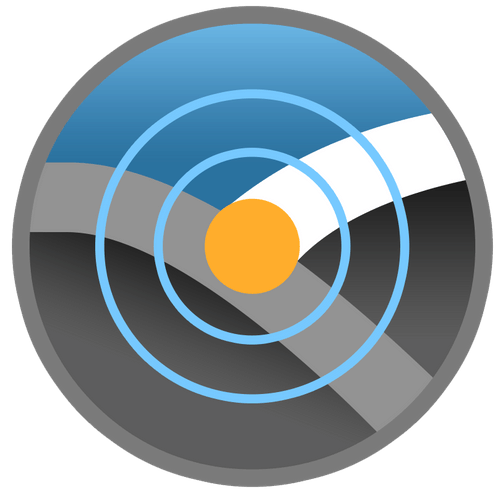| Day 1 (Monday April 3rd) |
| 8:30 am |
- Welcoming Remarks
- Workshop Goals and Objectives
|
Dean Lisa Graumlich
David Schmidt
William Wilcock
|
| 8:45 am |
Overview and Status of Early Warning Efforts [Moderated by John Vidale]
- Earthquake Early Warning Overview (Paul Bodin)
- Tsunami Monitoring and Modeling in Cascadia (Randy LeVeque)
|
| 9:15 am |
- Science goals and priorities for monitoring offshore Cascadia
- Discussion (10 min)
|
Kelin Wang |
| 9:55 am |
- Hazards along the coast: Existing preparations and future needs
- Discussion (10min)
|
Tim Walsh |
| 10:35 am |
Break (beverages and pastries) |
| 10:50 am |
Summaries of Existing Offshore Observatories [Moderated by Emily Roland]
- OOI Cabled Array (Deb Kelley)
- ONC Neptune (Martin Heesemann)
- DONET (Katsuyoshi Kawaguchi)
- S-NET (Masanao Shinohara on behalf of Kenji Uehira & Masashi Mochizuki)
- OBSCT (Masanao Shinohara)
- Discussion
|
| 12:30 pm |
Instructions for Breakout 1 |
David Schmidt |
| 12:35 pm |
Lunch (provided) |
| 1:35 pm |
Small Group Breakout 1: Scientific and Hazard Requirements for an Offshore System
- What are the goals and how should they be prioritized?
- Which goals require offshore measurements?
- What capabilities are needed - observations, coverage, data latency, system robustness?
|
| 2:55 pm |
Break (beverages and snacks) |
| 3:10 pm |
Lightning Talks
(2 minute presentations by participants; limited to 1 slide) |
| 5:00 pm |
Adjourn |
| 5:30 pm |
Burke Museum of Natural History and Culture exhibit open to meeting participants
(map, 6 min drive or 30 minute walk)
NE 45th St & 17th Ave NE, Seattle, WA 98105 |
| 6:30 pm |
Drinks followed by Buffet Dinner at the Burke Museum |
| Day 2 (Tuesday April 4th) |
| 8:30 am |
- Goals for Day 2
- Synthesis from Breakout 1
|
William Wilcock
Breakout Leaders |
| 9:00 am |
Engineering Approaches [Moderated by Geoff Cram]
- Cable Technologies
- Potential Layout Options
- Expandability Options
- Challenges and Risk
- Non-cabled Technologies
- Discussion
|
Mike Harrington
Chuck McGuire
Dana Manalang
|
| 10:10 am |
- Wave Gliders for Geodesy and Seismology (Dave Chadwell & John Orcutt)
- AUV's and Optical Modems for Seismology (John Collins)
- Discussion
|
| 10:40 am |
Break (beverages and pastries) |
| 11:00 am |
Engineering Approaches Continued [Moderated by Chuck McGuire]
- Tsunami buoys and future directions (Chris Meinig)
- Tsunami observations with DONET (Narumi Takahashi)
- Optical fiber sensors (Mark Zumberge)
- Measuring contributions to bottom pressure variability by water column processes (Randy Watts)
- Borehole Observations (Earl Davis)
- Real-time borehole observatories in Nankai-trough (Eiichiro Araki)
- Shallow Continental Shelves: a “no fly zone” for high precision seafloor geodesy, and a possible solution (Tim Dixon)
- Discussion
|
| 12:40 am |
Instructions for afternoon Breakout 2 |
David Schmidt |
| 12:45 pm |
Lunch (provided) |
| 1:35 pm |
Small Group Breakout 2: Design approaches and technologies
- What are the risks, pros and cons of the different engineering approaches? Is there a clear winner?
- What combination of sensors and spacing are needed? What observations are required before a full scale installation?
- What emerging technologies/platforms are most promising?
|
| 3:00 pm |
Break (beverages and snacks) |
| 3:20 pm |
- Synthesis from Breakout 2
- Instructions for Breakout 3
|
Breakout Leaders
William Wilcock |
| 3:50 pm |
Small Group Breakout 3:
Teams draft conceptual designs of offshore networks
Templates for Network Design Schematics ( .pptx, .key, .doc )
|
| 5:10 pm |
Reconfigure room (move tables and reposition poster boards- all-hands requested) |
| 5:30 pm |
Poster Session with open bar
|
| 7:30 pm |
Adjourn
Dinner on your own (several restaurants in walking distance)
|
| Day 3 (Wednesday April 5th) |
| 8:30 am |
- Goals for Day 3
- Synthesis discussion and proposed designs from Breakout 3
|
David Schmidt
Breakout Teams |
| 9 am |
International Efforts and Synergistic Programs
- Chile (Sergio Barrientos)
- Korea (Sang Mook Lee)
- New Zealand (Laura Wallace)
- SMART Cables (Bruce Howe)
- Subduction Zone Observatory (Bob Detrick)
- USGS Efforts (Joan Gomberg)
- NAS Committee on Seismology and Geodynamics (Maya Tolstoy)
|
| 10:30 am |
Break (beverages and pastries) |
| 10:45 am |
Group Discussion [Moderated by William Wilcock and David Schmidt]
- What is the path forward?
- Is there a sensible phased approach?
- What is required before implementation?
- Who are the stakeholders?
- How do we build a coalition?
|
| 12:00 pm |
Meeting Adjourns
Lunch (to-go boxes)
|

